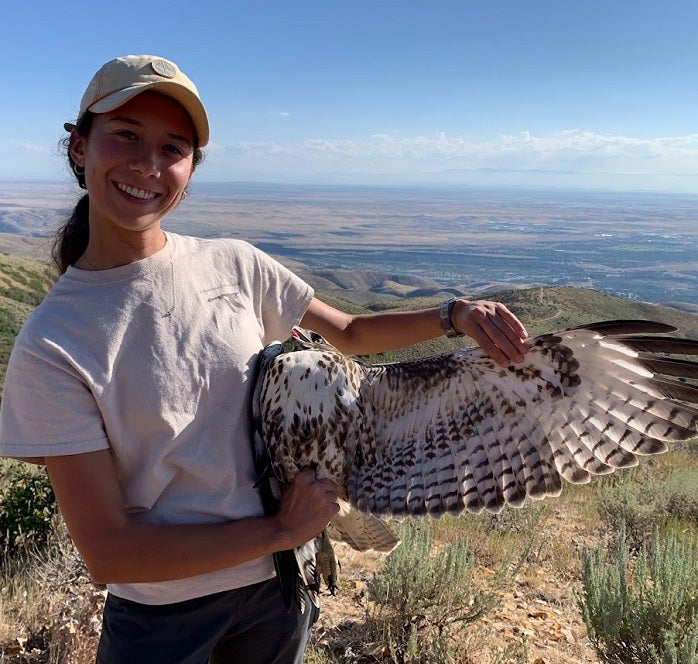
Boise State University MS Raptor Biology student Nora Honkomp defended her thesis, “Biological and Environmental Factors Associated with the Autumn Migration Timing of North American Raptors” on the morning of March 7, 2024. Honkomp’s main advisor is Julie Heath (MS, Raptor Biology, ’96; Boise State University Raptor Research Center; Biological Sciences), and her committee includes Trevor Caughlin (Biological Sciences) and Peter Olsoy of the USDA Agricultural Research Service.
ABSTRACT
Migration is an energetically expensive and risky event in the life cycles of many organisms. The timing of migration departure from the summer breeding grounds is important for determining the probability of survival and physical condition upon arrival at wintering sites. Many internal and external factors affect departure timing and its variability, and the conditions that are most important for determining timing are likely to be different across species, depending on their traits. I studied the life history correlates associated with the timing of departure for North American raptor species and explored the specific weather conditions shaping several species’ departure timing. I used data from eBird to calculate spatially explicit autumn departure timing for 15 migratory raptor species across the United States and Canada from 2011 to 2021. I found a negative effect of latitude (northern birds departing before southern birds) and this effect was stronger in short-distance migrants compared to long-distance migrants. Further, socially migrating species tended to depart earlier than species that migrate alone, and larger-bodied species tended to depart later than smaller species. Finally, long-distance migrants, diet specialists, and social migrants had more consistent departure timing compared to short-distance migrants, diet generalists, and solitary migrants who were more variable in timing. Next, I selected the four raptor species with the greatest eBird data availability (Broad-winged Hawk, Osprey, Swainson’s Hawk, and Turkey Vulture) and assessed their departure timing within a latitudinal band across the northern U.S. from 2002 to 2021. Using weather data from Daymet and a sliding time window analysis, I determined the most likely periods of sensitivity of four weather variables on each species’ departure timing: maximum and minimum temperature, precipitation, and snow-water-equivalent. I then combined these season-specific weather variables for each species and identified their effect on departure timing. Finally, I used data from NA-CORDEX to forecast the departure timing of all four species to 2075. The forecast analysis showed that, over the next 50 years, Swainson’s Hawks will advance their departure timing (depart earlier in the year) and Turkey Vultures will delay migration departure (depart later in the year). Combined, these analyses further our understanding of the relationships between life history traits and departure and provide new insight into factors associated with annual variation in migration timing, which may underlie vulnerability to changing environmental conditions. Additionally, it identifies unique environmental factors related to the timing of autumn departure for four common species and provides estimates of future changes in an important part of their full annual cycles.